The knee joint is one of the largest and most complex joints. It is subjected to a huge load on a daily basis, so it is not surprising that it periodically fails to function properly. If your knee is painful, has marked swelling, and is almost constant, you should definitely consult your doctor. Such a pathological condition can be a signal of the development of one of the diseases that deform the joints. Of course, it is necessary to learn to distinguish situations when visiting a doctor. But not getting treatment or self-treating can lead to complications.
Structure of the knee joint
To better understand why your knees hurt, you need to understand their anatomy. So the joint includes the femur, tibia, and patella. The two largest bones have two protrusions each: the internal and external ducts.
All surfaces in contact with each other are covered with hyaline cartilage. Thanks to him, the mobility of the knee joint, its depreciating properties is ensured. Around this bony connection is a type of cyst, lined from the inside with a layer of synovial fluid. It is filled with synovial fluid, thanks to which the joint is nourished and ensures its mobility.
The knee joint is made up of more than just bones. All its elements are united by the cruciate and cruciate ligaments, thigh muscles, tendons. The kneecap is attached to other elements through its own ligaments. In order for the knee to move, 6 synovial sacs are needed. The supply of nutrition and nourishment to the joints is done through the nerves and blood vessels, located in the soft tissues surrounding the joints.
Knee pain: causes
If your knee begins to hurt, develops swelling, limits your range of motion, and becomes very uncomfortable, you should see your doctor right away. If the destruction has already begun, it will not be possible to completely cure the knee. However, it will be possible to stop or slow its progression.
So, we can distinguish the causes of knee pain as follows:
- gonarthrosis.It occurs in almost 50% of all cases of joint damage. Pathology develops over a very long time. Among the symptoms of this disease, the following can be distinguished: the knee does not hurt at rest, however, the patient becomes difficult to climb stairs, take long walks, squat and get up from the hunchback. . When moving, the patient hears a clicking sound in the knee joint, the mobility decreases. Over time, as the cartilage layer wears down, the distance between the bone surfaces decreases. In this case, bone cells appear, nerves and blood vessels are compressed, and the knee itself is deformed;
- meniscopathy, as well as the formation of meniscus cysts. Usually only one knee hurts. The cause of the pathology can be a single injury or periodic damage to the joint. During an exacerbation, the pain is acute, throbbing, sharp, and intense. With this disease, deformity of the joint is not threatening, but inflammation can affect the synovial sacs;
- circulatory problems (necrosis).This disrupts the nutrition of the knee. Most often, this condition occurs in adolescents. That is, they have a bone growth rate too fast, in which their nutrition is somewhat difficult. If the pain in the knee joint is strong enough at first, then after a while, its intensity will gradually decrease. Pain is usually localized to one point, and does not extend to the entire knee. The discomfort may be aggravated by hypothermia;
- arthritis.This is an inflammatory disease of the knee that can be diagnosed in young people, especially women. At the same time, the knee is very painful, the affected area is swollen, and the skin is red. Nocturnal pain becomes more pronounced. Knees hurt even at rest, when the weather changes. The reasons for the development of pathology are excessive body weight, old age, weakening of the immune system;
- bursitis.This is an inflammatory condition of the synovial sacs of the knee joint. Characteristic symptoms of the pathology are redness of the skin in the affected area, swelling and reduced range of motion. The cavities of the synovial sacs are filled with secretions, which contain harmful microorganisms. The cause of the development of the pathology is trauma, excessive physical activity. The knee not only hurts very badly, a person develops general weakness and discomfort;
- bursitisHere the inflammation affects the synovial membrane of the knee joint. At the same time, there is swelling, burning pain in the joint area;
- periarthritis.This disease is usually diagnosed in women who have a large body weight and are already 40 years old. At the same time, discomfort when climbing stairs, when straightening the legs. Pathological process affecting tendons, ligaments and muscles, joint capsule. Sensation of pain, swelling appears in the extremities;
- chondromatosis.This disease is characterized by the formation of small cartilage nodules, located in the capsule of the joint. At the same time, signs of dehydration in the joints, limited movement, and crunching sound when moving. Due to the compression of soft tissues, the patient feels intense pain;
- chondromalacia patella.Here the cartilage undergoes degenerative changes: it simply dies. The reasons for this pathological condition are trivial: knee injuries, characteristics of some professions. At the same time, the knee is very painful, the discomfort is more pronounced with any movement. In the left or right knee, a crackling sound can be heard very clearly. A person cannot practically stand on the affected limb;
- bone tumor.Knee pain occurs due to tumor growth pressing on soft tissues containing nerves and blood vessels;
- Baker's cyst.This is a small type of hernia that can occur in young people and children between the ages of 3 and 7. It is so small that it cannot always be diagnosed on examination. It does not threaten human health and is not irritating. However, if it does develop, the joint can be painful, especially when bending and straightening the leg. If the hernia is large, then surgery is performed to remove it;
- knee tendonitis.This is a condition in which the tendons in the knee area become inflamed and cannot perform their normal functions. Almost everyone is affected by this disease. The pain is often aching, the affected area reacts to the change of weather;
- knee osteoarthritis.This is where the cartilage sloughs off the joint surface. At first, the knee does not hurt very much, but over time its intensity increases, and inflammation participates in the pathological process;
- Koenig disease.Here, some cartilage can separate from the bone and move inside the joint. At the same time, movement becomes difficult, there is a slight pain. With progression, swelling of the knee joint is also observed. Treatment of pathology in adults is more difficult than in children;
- Osgood-Schlatter pathology.It provides for the formation of bumps in the knee area. Most often, the disease is diagnosed in boys, as well as people who participate in sports activities. Sharp pain, worse when bending and straightening the leg.
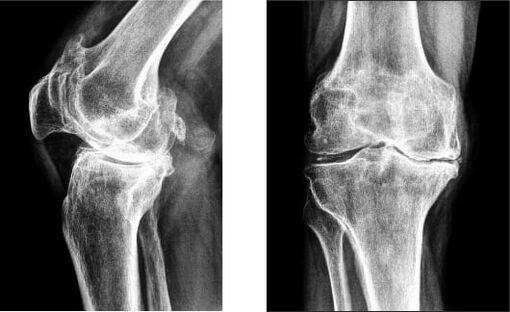
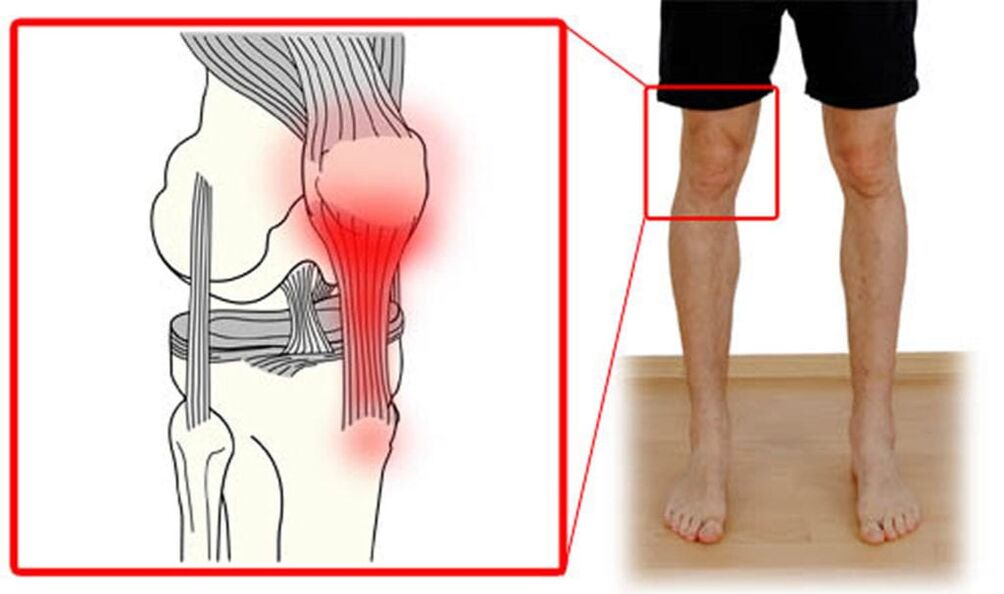
These reasons are the main reasons, but not the only reasons. Therefore, it is necessary to consider other factors that influence knee pain.
Diseases of other organs that cause pain in the knee
Some conditions not related to the knee joint can cause pain:
- Fibromyalgia.The discomfort is localized to the muscles and soft tissues, but may occur in nearby joints. The inflammatory process does not develop. In addition to the pain in the knee joint, the patient feels stiffness when moving, fatigue, may have convulsions.
- Dysplasia or coxarthrosis of the hip joint.The pain syndrome in this case extends to the entire leg.
- Sciatic nerve disease.It is pinched by the vertebrae of the lumbosacral spine. Severe throbbing pain that may radiate to the thighs and knees.
What systemic diseases can cause knee pain? In addition to the reasons described above, there are other factors that contribute to the development of pain syndrome:
- Gout.The presented disease occurs due to a violation of uric acid metabolism in the body. It is poorly removed from it, turning into salt deposits that accumulate in the joints. In this case, the knee may also be painful. And the pain is very sharp and sharp. Usually, the disease appears in men who abuse alcohol and eat inappropriately. In the affected area, the skin is red, the more painful the knee joint becomes at night. The duration of the attack ranges from a few days to several weeks;
- Osteoporosis.Pathology related to low bone density due to improper structure. The pain in the knee joint is dull, aching, wanting to get rid of it is not an easy thing. Bones in this pathology are very fragile;
- rheumatoid arthritis.It is a systemic disease, characterized by inflammation of the connective tissues. It begins to develop actively with a decline in the protective functions of the body. Expressed by a feeling of tightness that a person can feel after a long period of rest;
- osteomyelitis.The presented bacterial pathology causes rather severe pain of a boring nature. In the affected joint, the skin turns red and discomfort increases with movement. The danger of this disease is that as a result, it begins to cause marrow death;
- infectious diseases.They are characterized by pain in the knee joint, which disappears after a course of antibiotic treatment;
- Paget's disease.In this case, the bone tissue is formed incorrectly so the spine begins to deform. With this pathology, it is the tubular bones that are affected, which subsequently become very fragile. Recognizing this disease is quite difficult, as symptoms may not appear. The only thing that may indicate the presence of pathology is pain in the knee at night and burning sensation at the site of injury.
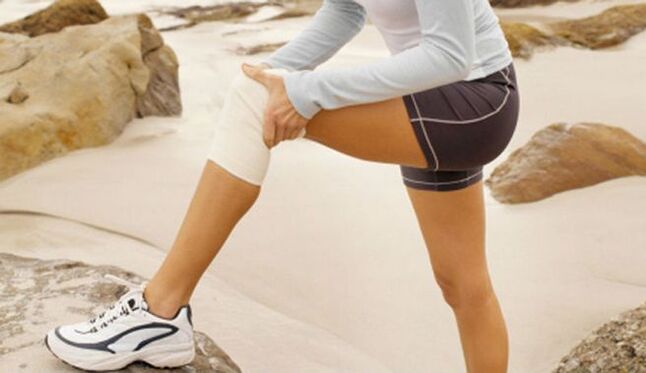
If knee pain is caused by systemic disease or osteoarthritis, it may not always be completely cured. However, treatment must be carried out without fail so that the disease does not develop further or at least slows its course.
Trauma as a cause of pain syndrome
Pathological processes in this case can develop immediately after the injury and some time later. We can distinguish injuries of the knee joint as follows:
- Torn, torn, or torn ligaments in the knee.These lesions lead to the appearance of joint "advancing" syndrome. In addition, a person feels severe pain, sequelae of the joint develop, becoming unstable.
- Injury.Here the intensity of the pain syndrome is low. There were no serious consequences after the injury. The swelling, as well as the hematoma, usually goes away on its own in one to two weeks.
- Cupping tears.It results in a strong blow to the anterior region of the knee joint. After passing the acute phase of the disease, the pain syndrome often makes the patient anxious when climbing stairs, which is quite difficult to do. There is slight swelling in the knee joint.
- Fracture.It occurs when dropped from a great height or a strong impact. Strong, sharp pain, swelling appears in the affected area, and the skin is pale. The victim cannot stand on his injured leg. During a fracture, you will hear a crackling and cracking sound, the bone may penetrate the skin.
- Tendon rupture.This lesion is uncommon, but it is acute, followed by pain. When walking, the pain in the left or right knee increases.
- Knee dislocation.In this case, some component parts of the joint may come out of the joint.
Trauma can cause chronic illness.
Most knee conditions have similar symptoms, so it can be quite difficult to recognize. That is why self-medication is not worth it, as you can aggravate the situation.
Who is at risk?
Knee pain, crunching, and swelling in the affected area are more common in some people than others. The risk group includes people:
- Presence of major pathologies.
- genetic predisposition.
- Sports constant overload of the knee.
- Excessive body weight.
- Injury.
- I had knee surgery.
- Poorly developed knee musculoskeletal apparatus.
In addition, women are more susceptible to knee problems as are the elderly and older.
In which cases should consult a doctor?

If a person feels that their knee hurts, then they urgently need to contact a specialist in this case:
- The patient suffered from pain for more than two months, did not sleep at night.
- If the pain syndrome is characterized by high intensity, it comes on suddenly.
- Hear a crunch in the knee joint while walking.
- Knees hurt every day, and at a certain time, under certain conditions.
- In the knee joint, there is occasional feeling of instability.
- If there are additional pathological signs: skin rash, fever, fever.
- Appears pain, accompanied by deformed joints, limited mobility.
- Pain syndrome becomes a constant companion of a person.
- Signs of the inflammatory process appear: redness of the skin, swelling, increased local temperature in the affected area.
Just having these signs is enough to make a decision to see a doctor. By delaying the visit, the patient increases the duration and complexity of therapy, and allows further pathology to develop.
Types of pain
Why the knee hurts, most of the reasons for the development of the pathological condition are already clear. But the nature of the pain can be different. For example, depending on the disease that caused it, the pain has the following properties:
- sharp, sharp.It causes rupture of meniscus or ligaments, reactive arthritis, acute phase of bursitis;
- dull, pulling.Bursitis or bursitis can cause it;
- hurting.This type of pain is characteristic of arthropathy, gonarthrosis;
- vibrate.A person feels it with an injury to the meniscus or from damage with a joint deformity;
- burn.It is characteristic of sciatic nerve compression, as well as bone tuberculosis;
- stab.It is caused by a cyst in the synovial sac. And stabbing pain is characteristic of osteoporosis, an old injury to the meniscus;
- drill.It is caused by osteomyelitis;
- periodic.It occurs when the patient has inflammation of the tendons or muscles;
- shoot through.It puts pressure on nerve endings.
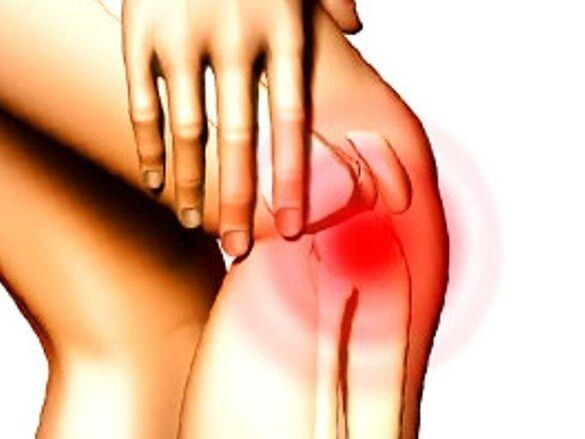
Pathological diagnosis and first aid
Many people complain that their knees hurt and they don't know what to do. But when you feel pain and crunching in the knee joint, you must definitely go to the doctor and conduct treatment.
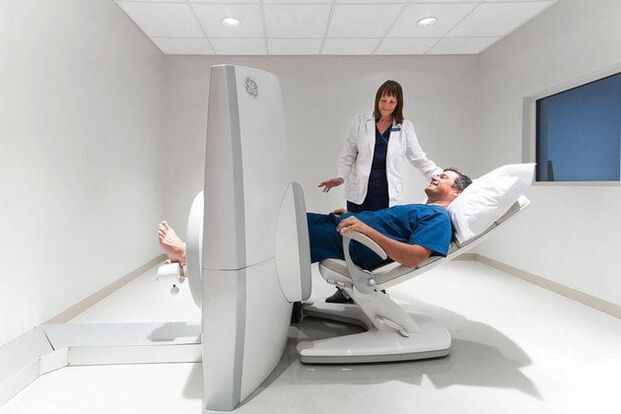
Diagnosis involves the use of such procedures:
- Laboratory blood and urine tests.
- Blood chemistry.
- Pulp and synovial puncture.
- Lubricants for the presence of microflora.
- Arthroscopy. This procedure is used as a diagnosis and treatment for joint pain. It is easy to perform and does not require long rehabilitation periods.
- X-ray.
- MRI or CT.
- supersonic.
- Measure density.
Knee pain: First aid
If a person feels pain or pulls his leg in the knee area, he or she must first secure the remaining limbs. Treat it at home with pain relievers or anti-inflammatory medications.
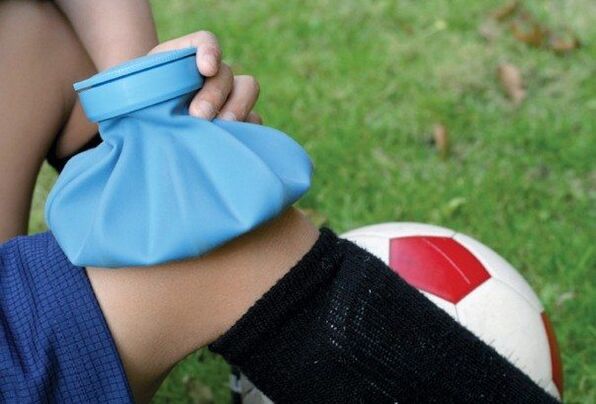
Pain can be reduced by applying cold compresses. Cold is used as a pain reliever when the cause of pain is trauma. The limb is immobilized and placed on a hill. When there are wounds in the joint area, they should be treated with antiseptics. These remedies are not a cure-all. They should be taken only before visiting a doctor.
Knee pain: Medical treatment
So, what to do if a crunch is heard in a joint and severe discomfort is felt? First you need to find out why these symptoms appear. One of the phases of therapy is drug therapy. So, when it comes to knee pain, you can quickly get rid of severe symptoms with the help of medications such as:
- antibiotics (when the discomfort is caused by a viral infection);
- non-steroidal anti-inflammatory drugs.
Some conditions need to be treated with surgery. If there is fluid in the joint cavity, it must be removed. Cysts can also be treated through surgery or glucocorticosteroid blockade.

If the joints are painful due to an injury, in some cases, reshaping may be necessary. A tight bandage, orthopedic and even plaster are applied to the affected joint. It is necessary to treat a limb not only with the help of drugs. Often, patients are prescribed to wear or use special orthopedic devices that can remove the load from the knee.
It is necessary to treat systemic diseases in a complex way. Knee pain in these cases must be treated with immunosuppressants, anti-inflammatory drugs, and glucocorticosteroids. To eliminate the symptoms of gonarthrosis, injections of drugs into the joints, chondroprotectors are used.
Gymnastics and massage
If the knee joint hurts when standing up, hears a crunching sound and feels uncomfortable even at night, exercise and massage will help eliminate stiffness and reduce pain.

At the same time, it is advisable to exercise if the person is not in great pain and with the permission of the doctor. All exercises are done slowly. You cannot make sudden movements. If the knee is very painful then you need to switch to the simplest exercises. Weekly load can be increased.
In a lying or sitting position, you can perform flexion and extension of the limbs, alternate half-body movements, pull the knees into the abdomen, bring the legs to the sides. After completing the exercises, you need to relax, and then move on to massage. This procedure is also very effective for pain relief.
Painful knees can be massaged on their own, but it is better if a specialist does this. To get rid of most symptoms, you need to do a course of massage, a session lasting no more than 20 minutes. Perform internal and external rubbing, as well as the lateral sides, to apply pressure to the kneecap. During the procedure, you need to make sure that the person is not injured.
How to treat knee osteoarthritis at home?
An uncomfortable phenomenon in the knee, as well as pain that occurs at night, is an unpleasant phenomenon. Why these symptoms appear is known. However, it is possible to relieve pain and restore normal joint function with more than just medication. You can do this at home with the help of folk remedies.
Quickly get rid of the pathology will not work. In this way, you need to treat the knee for at least two months. In addition, you need to find products that really work, with many good reviews.
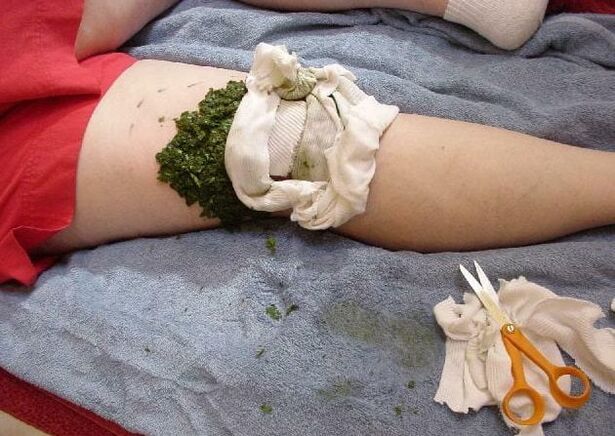
The following formulas may be helpful:
- In half a liter of boiling water, pour 2 large spoons of cinqueil grass, then you need to let it brew. Oral medication should be twice a day for 100 ml. You can use a decoction of fenugreek on the affected knee to apply overnight.
- A decoction of oats will help relieve pain. To prepare it, you need to take a liter of water and a glass of cereal. The mixture is boiled, then left overnight to infuse. During the day you need to use 2 glasses of water, divided into several portions. It takes 2 weeks to treat the joints this way.
- To relieve discomfort and improve blood circulation in the affected area, you can apply a paste of mashed potatoes and horseradish, in equal proportions. It will help you get rid of the pain quickly. Place a gauze pad on the affected knee and cover with a clean cloth. Wash off after 15 minutes. To relieve unpleasant symptoms, just 10 courses are enough.
- Applying mustard, applied to aching feet at night, also received many good reviews. To prepare it, a spoonful of mustard is taken, mixed with the same amount of honey and soda. By morning, the gauze should help relieve severe discomfort.
- If the knee joint is painful, you can use bitter chili alcohol to rub it. The half-liter jar should be filled with chopped pepper, then filled with wine to the full mouth. You need to insist on the remedy for a week.
You can do your own knee massage at home.
If you already know why unpleasant sensations appear, then you can choose the appropriate folk remedies to help get rid of them. But before that, you should consult your doctor.
Disease prevention
To keep your knee joint healthy and functioning well for a long time, you must adhere to your doctor's simple recommendations:
- Reduce stress on joints.
- Combination of rest and work is reasonable.
- Timely treatment of all infectious diseases in the body.
- Avoid hypothermia of the extremities.
- After the age of 35, chondroprotectors should be started.
- During sports, it is necessary to protect the joint with a knee pad - a specialized orthopedic device to immobilize the joint.
- It is important to normalize your weight.
- Nutrition plays an important role in bone health. It is better to reduce your intake of saturated fats from animals, white bread, and sweets. Include more fiber, vegetable oils, vegetables and fruits in the diet. Proper nutrition not only helps reduce discomfort but also improves the function of joints.












































